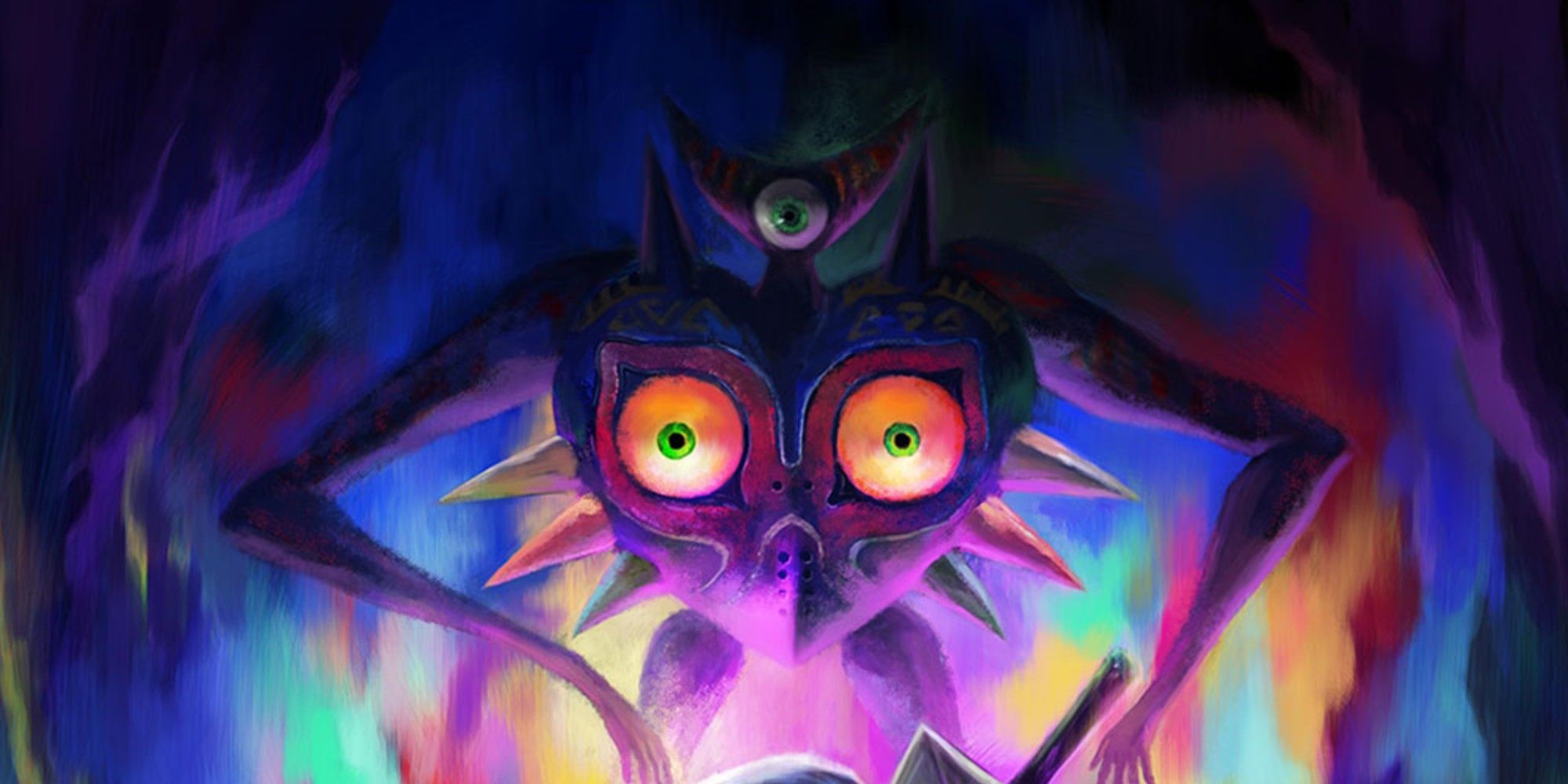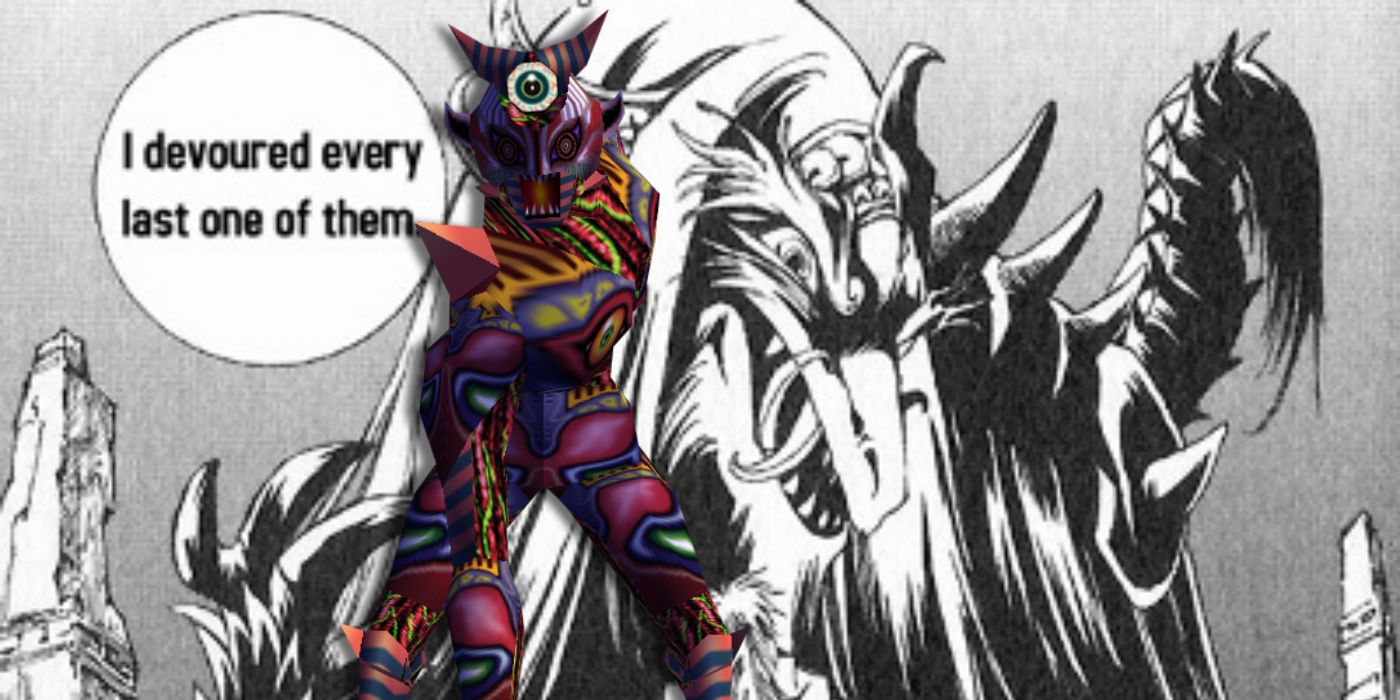Although Ganon and his human form, Ganondorf, are the main antagonists of most The Legend of Zelda games, the series does occasionally branch out to explore new foes, ranging from Dark Link to the mysterious entity behind the eponymous Majora's Mask. Majora is a constant presence in The Legend of Zelda: Majora's Mask, tormenting Termina with a cataclysmic time loop, but relatively little is known about its true identity.
Majora's Mask is a sentient object, able to speak to and control others. Majora's Mask's Happy Mask Salesman describes it as an artifact with world-ending power, but it's not clear who the entity is that gives it such power. All that's known for certain is an ancient tribe sealed the mask away to prevent destruction.
It's even unclear what Majora really looks like. In the game's final battle, it takes three separate forms - the jellyfish-like Mask form, the spindly-limbed Incarnation form, and the humanoid Wrath form - but none of these are explicitly confirmed as its true appearance. The Deku, Goron, and Zora Masks bear the appearances of their respective species, so it's also possible Majora's Mask does the same. A few fan theories could shed light on Majora's origins and history.
The Legend of Zelda: Majora's True Identity Theories
The non-canonical The Legend of Zelda: Majora's Mask manga depicts Majora as a draconic creature in possession of magical armor. Many have come to slay this Majora and take possession of the power its armor wielded, but it ate them all. A traveler who bears close resemblance to Link arrives one day and plays a mysterious drum that seemingly causes Majora to dance uncontrollably until it dies from exhaustion. The traveler then takes Majora's magical armor and carves Majora's Mask from it, sealing the creature's power in the object.
Though it's not canon, the manga's telling does somewhat line up with one theory of Majora's origins, as told by Zeldapedia: Majora, a demon defeated by the Fierce Deity, sealed itself away in the mask to save itself. The Fierce Deity then did the same, hoping someone would one day use its own mask's powers to defeat Majora when it inevitably returned. Majora (who, in game, gives Link the Fierce Deity Mask itself while in its "moon child" form) kept the Fierce Deity Mask close by, thinking it would be powerful enough to defeat the deity one day and get its revenge.
The idea of identity-defining spirits is a powerful theme in The Legend of Zelda. Link, Zelda and Ganon are all reincarnations of the same spirits, and even certain objects have spirits of their own. In Skyward Sword, Fi is the spirit of the Goddess Sword, and Ghirahim is the spirit of Demise's Sword. Following this logic, another theory, via Zeldapedia, posits Majora is simply the spirit of the mask - a name to the evil and chaotic energy that powers it.
It's also possible Majora was an ancestor of the Twili from Twilight Princess. Fans often point out that the mask's design, most notably its eyes, resemble the Fused Shadow, a powerful artifact created by an "ancient race" that Midna wears part of as a helmet. Additionally, Twilight Princess villain Zant, a member of the Twili, behaves similarly to Majora's Mask. Though these clues are small, it's possible The Legend of Zelda is asking fans to piece them together in order to decipher the identity of one of its most chaotic villains.
Source: Zeldapedia


